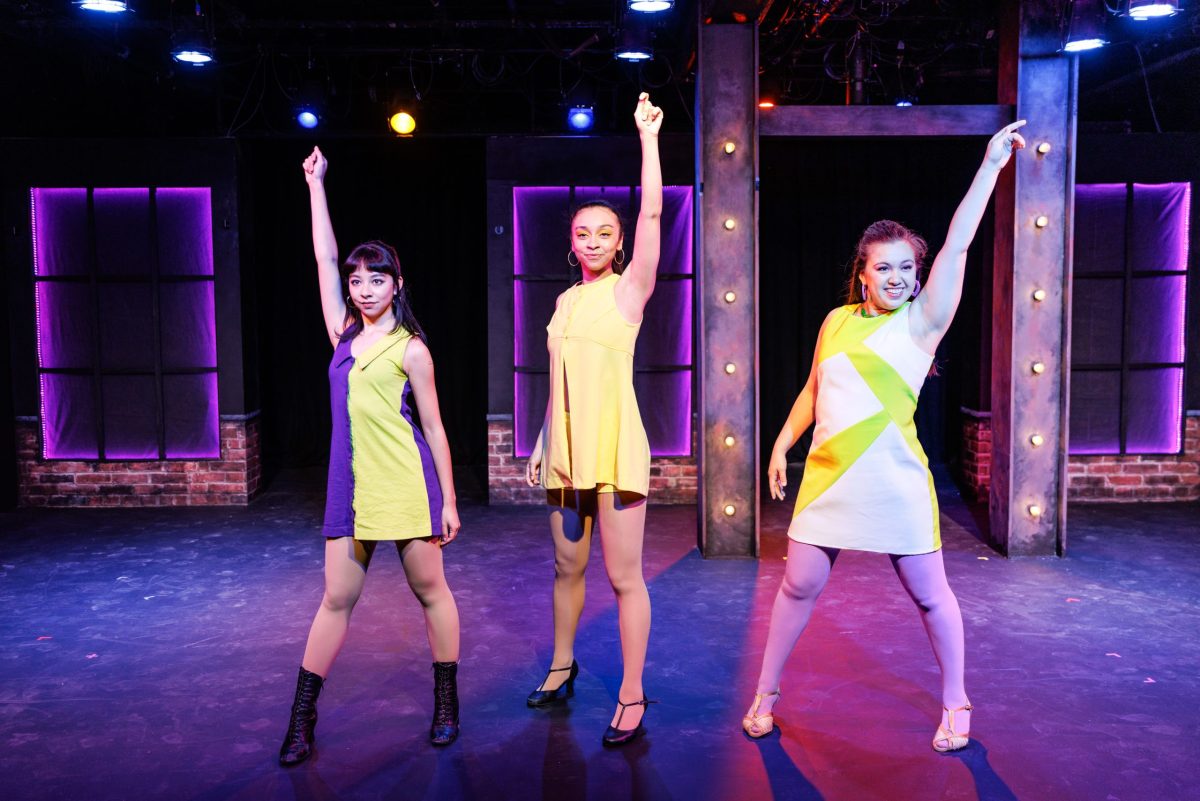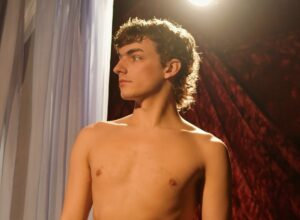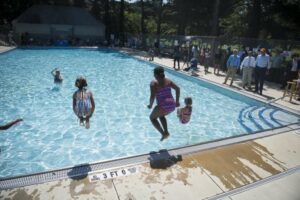The annual Chicago International Puppet Theater Festival in January is a highlight of the Chicago theater season, but the festival works year-round to help develop new work and artists.
Opening this weekend for its fourth year, the festival’s Puppet Lab Showcase, presented at Segundo Ruiz Belvis Cultural Center in Hermosa, and led by codirectors Tom Lee and Grace Needlman, highlights the work of eight artists who have been in residence at the lab for the past eight months. The lab has a three-pronged mission to diversify the local puppet arts scene by reaching new populations of artists, increasing puppet works from other disciplines, and growing appreciation for puppetry in general. Needlman identifies an additional perk of the program: “I think a lot of people who come into the program already have a sense of community leadership, but it’s been so cool to see Puppet Lab alums go on to use the practices that we develop in Puppet Lab and build the community.”
Chicago Puppet Lab Showcase
5/29-6/1: Thu–Fri 7 PM, Sat–Sun 3 and 7 PM; Segundo Ruiz Belvis Cultural Center, 4048 W. Armitage, chicagopuppetfest.org/chicago-puppet-lab, $20 ($15 seniors/students). See website for complete schedule.
Lee got the idea for Puppet Lab from his experience in a similar, now defunct, program at St. Ann’s Warehouse in Brooklyn. “When I first made work in New York City, I didn’t even know how to make a puppet show. For me as a young artist it was totally ground-shifting. It really taught me how one makes a puppet show, how you experiment, and how to figure out your own process. It gives the artist a goal to work towards.”
Puppet Lab fulfills an important part of the broader mission of the Puppet Theater Festival, Lee notes, by “presenting complete, finished, packaged shows from all over the place. Puppet Lab is building the local community of artists. It really feels like this is having an impact on what Chicago puppet theater looks like.”
All around Chicago, there are “puppet slams” hosted by multiple solo artists and fledgling companies and collectives. These events are exciting ways to showcase new, short (five- to ten-minute) acts, but Puppet Lab offers something a bit more structured to help puppeteers move their work toward a full show.
Needlman explains other ways the lab is different from puppet slams. “The big thing that it’s important for audiences to know coming to Puppet Lab is that artists are taking on very large or very new and challenging projects that they’ve wanted to do for a decade or more. It’s like, ‘This is a thing that I’ve been trying to get out into the world,’ or ‘This is a new way of working,’ or ‘This is a new problem.’”
The Puppet Lab provides support for the selected residents in developing individual pieces from concept to performance. They meet weekly during that time to offer each other support and feedback while the work evolves into a 15- to 20-minute piece of puppetry. This current iteration, presented in two programs of four pieces each, will include full costumes, DIY sets, sophisticated projections, and live music—all provided by multidisciplinary puppeteers, some with backgrounds in acting, music, or fine art. Among other themes, this year’s pieces will explore cultural myths, family heritage, and musical realms.
One of the biggest advantages to working with puppets is the range of freedom it gives the creator in storytelling. On the Segundo Ruiz stage, puppets will travel through time to tell forgotten histories, perform surgery, and project interior worlds, often with surprising elements, like ice and experimental sounds.
One of the artists this year is Madigan Burke, an ex–mechanical engineer turned multidisciplinary artist. Burke frequently explores their queerness through puppetry with pieces illustrating relationships with the body. Their piece, Operating Theater, will entail surgery and live-feed video puppetry. They say the Puppet Lab is good for all audiences. “It does a few things that are hard to find anywhere else. For people that don’t know much about puppetry, [it helps] to know that puppetry includes everything from shadow puppets to foam puppets, to light puppets and marionettes. It can be so many different things.”
For the people who are puppet fans already, Burke says, “It’s a great thing to see the showcase and then consider applying yourself. Any sort of performance can sometimes seem intimidating as an audience member. But with this cohort, it’s been really neat to see people that are coming in from effectively not-quite-puppetry backgrounds.” They say it’s been gratifying to see those works develop into puppet performance.
Burke describes the Chicago puppet ecosystem in a biological way. “In Chicago, there’s such a thriving DIY community of puppetry. Once you meet a couple puppet people and start chatting and showing up to events, it just mushrooms, like a mycelium network. That is really puppetry in Chicago. The roots are everywhere. Everybody’s connected. Everybody knows somebody that can help you. It’s really awesome.”
Another artist who is part of the thriving Chicago puppet culture is Sam Lewis. With a background as a poet, vocalist, and actor (Lewis is also a cofounder of Elastic Arts Foundation), he says being part of Puppet Lab has helped him step up his game with puppetry to develop a longer piece. “Puppet Lab became really an essential element in this three-pronged strategy I had.” Being accepted into the program gave him the impetus to seek out two other resources that allowed his work to come together. Lewis found a space large enough to build his puppets as part of South Side Artists in Sacred Spaces because making his art on the south side was important to him.

Lewis also worked with Voice of the City, an organization that connects artists with neighborhood residents, receiving a Neighborhood Access Program (NAP) grant from the city for work based on family histories and genealogy. This enabled him to further develop his piece Black Episcopalian, which tells his family history using shadow puppetry and multiplane projection. Lewis says it’s especially important to be stewarding and documenting this very personal family history at a time when histories are being erased. “I take that seriously and try to work in the ways that I feel are important for us to preserve histories. You get to a point where you’re the adult in the room and if you don’t do it, it’s just not gonna get done. There’s always someone else who will handle it, someone else has it. But we’re at the steering wheel now.”
Lee and Needlman say that seeing the shows of both programs in the showcase is important for understanding the scope of the work being presented via Puppet Lab. In addition to Burke and Lewis, the other artists and pieces in this year’s Puppet Lab are Irene Wa.’s she is drying, a large-scale marionette piece that explores “the restriction of movement and the tension of dependency”; Charlie Malavé’s A Suite of Dreams, which incorporates shadow puppetry, projection, and miniatures to explore a dream world; Ruby Que’s Touch, which uses ice puppetry and a puppet microphone to play with “constructed invisibility”; Anthony-Michael Stokes’s An Anansi Experience, which draws on West African folklore; Robbie Lynn Hunsinger’s Shehnai Mist/Suona Flames, which incorporates shadow puppets, animations, and wearable musical instruments in an exploration of “the moods and music of the Indian Shehnai and Chinese Suona”; and Michele Stine’s AudioFile, which uses crankies, object puppetry, and figurative puppetry to embody “the physical remnants of a life left behind, and the playground for someone to rediscover the joy of sound.”
Needlman says, “This group of people has been working together for eight months and everyone’s working on their own show, but there’s a real dialogue, a real sort of interwovenness between the shows that is not generally something that you see in a slam when people are just coming together for a one-off show.”
Lee adds, “There’s a whole lot of momentum behind Puppet Lab. We just hope it continues to get stronger and has more artists come through it. If you love puppets, you’ve got to come and check it out. If you hate puppets—I don’t know how that’s possible, but this will change your mind. If you don’t know about puppets, you’re just going to discover what is truly possible.”









